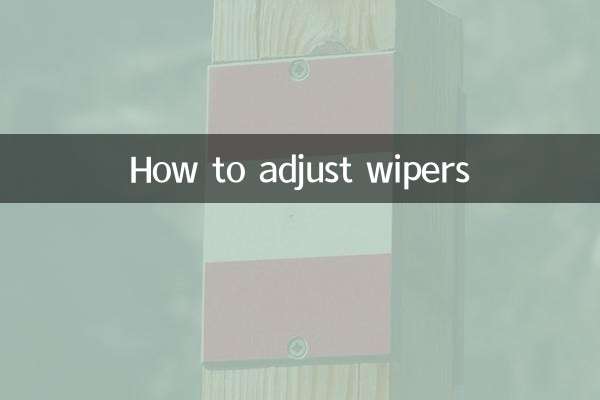How to start a car: full analysis from operating steps to frequently asked questions
Starting a car is one of the most basic skills in driving, but it can still be confusing for novice drivers or those switching between automatic and manual transmissions. This article will combine the hot automotive topics on the Internet in the past 10 days, and provide a structured analysis of the initial operation steps, precautions and common problems, and attach a data comparison table.
1. Getting Started with a Manual Transmission Car

1.Preparation: Adjust the seat and rearview mirror, fasten your seat belt, and confirm that the gear is in neutral.
2.Start the engine: Depress the clutch pedal (must be fully depressed) and turn the key to start.
3.Shift into first gear: Keep the clutch depressed and push the gear lever into the first gear position.
4.Release the handbrake: Press the handbrake button and slowly lower the handbrake lever.
5.Start operation: Gently lift the clutch to the semi-linkage point (the car body shakes slightly), and at the same time slowly step on the accelerator. Release the clutch completely after the vehicle starts to move.
2. Getting Started with an Automatic Car
1.Preparation: Same as manual transmission, make sure the gear is in P gear (parking gear).
2.Start the engine: Depress the brake pedal, press the start button or turn the key.
3.Switch gears: Keep the brake depressed and move the gear lever from P to D (forward gear).
4.Release the handbrake: Press the button of the electronic handbrake, and lower the handle of the mechanical handbrake.
5.Start operation: Slowly release the brake pedal, then lightly press the accelerator to accelerate when the vehicle starts to move.
3. Comparative data of starting with manual transmission and automatic transmission
| Comparative item | Manual transmission | Automatic |
|---|---|---|
| Operational complexity | High (requires clutch control) | Low (no shifting required) |
| Common mistakes | The clutch is released too quickly, causing stalling | Pressing the accelerator as the brake by mistake |
| Applicable scenarios | Frequent starts on congested roads make it tiring | City driving is easier |
| Fuel consumption performance | Theoretically lower (depends on driving skills) | More stable than novices |
4. Answers to popular questions (top 3 searches in the past 10 days)
1.Why does the vehicle shake when starting?
Manual transmission: the clutch has not reached the half linkage point or the throttle is too small; automatic transmission: it may be due to insufficient transmission oil or carbon deposits.
2.What should I do if my car keeps slipping when starting on a hill?
Manual transmission: cooperate with the handbrake or use the "left foot semi-linkage + right foot accelerator" technique; automatic transmission: turn on the hill assist function (if available).
3.Why do electric vehicles start faster than fuel vehicles?
The electric motor can instantly output maximum torque without waiting for the speed to rise (refer to Tesla Model 3's 0-50km/h acceleration of 3.3 seconds).
5. Safety precautions
• Be sure to observe the rearview mirror and blind spots before starting
• When starting at night, you need to turn on the low beam headlights in advance
• When starting on ice and snow, you should use second gear (manual transmission) or snow mode (automatic transmission)
• Avoid "ejection start" causing damage to the gearbox
Summary: Whether it is a manual transmission or an automatic transmission, the key to a smooth start lies in the coordinated control of the accelerator and clutch/brake. It is recommended that novices practice semi-linked operation repeatedly in an open field and regularly check the status of the vehicle's clutch or gearbox. With the popularity of new energy vehicles, new starting methods such as the single-pedal mode are also worthy of attention.

check the details

check the details